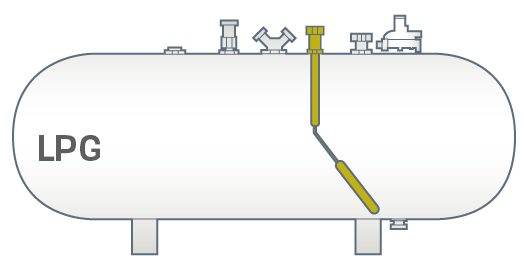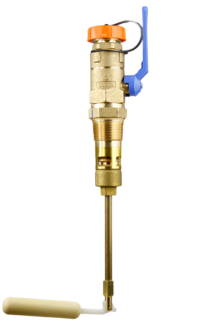Filler valve equipped with OPD. Bringing you another article in our Cavagna Classics, this focus is on Filler Valves with OPD. Available for different countries and different tank specifications and have been in circulation for more than 20 years. Yep definitely one of our classics!
This article will focus on the specific continuous improvement on safety that is put into every valve.


What is a filler valve with OPD and how does it work?
Here we are with the basics again, we know, you know your stuff, but let’s explain anyway…
OPD means Overfill Protection Device. Which, of course, does what it says on the tin… protects the device from Overfilling! It is a safety feature and a key component for gas companies when refilling. It lets the filler know when the tank has reached its maximum capacity (80%-85%* Varies depending on customer requirements, gas mixture and local regulations) and will stop automatically.
The filler valve is the valve that is most utilized on the tank due to consistent refilling required. This is why Cavagna Group continuously improves the safety features available to ensure a quick, smooth and safe process every time. You can see its position on this tank in the image.

It looks like this (aesthetics change depending on model). The image on the right shows a Double Filling Valve with Automatic Stop and Manual cut off device.
It operates inside the LPG/Propane tank and has an internal float gauge as seen here. This will rise as the liquid rises and when it reaches the maximum level, the gauge pushes the valve closed, meaning it cannot continue to be filled. Length size varies depending on the capacity requirement specified and can be tailored to individual needs. All of our filler valves have a filling capacity ≥ 8 m3 water Δp= 4 bar.
Tank sizes can vary depending on country sizing and requirements with precision filling to 80%-85*. Which can result in, some areas, up to 30% faster filling time than other competition.
Why does there need to be a filling limit?
The liquid gas expands as it changes temperature and the vapour needs enough space at the top of the tank where it settles. Filling the tank at 80% allows for enough space for the expansion. This is also a safety feature. If there is not enough space in the tank it can be over pressured and create potentially dangerous conditions. For example, the safety relief valve may open or LPG, in liquid phase, could enter into the piping system.
Optional handle for manual shutoff
It’s also possible to add an optional handle to the valve. The result is an extended filler valve with ball shut-off valve manually operated, that allows the user to manually close the valve if necessary. The handle is another optional safety feature in addition to the OPD.
Improving again the safety aspect while improving the performance for the end user.
Filler Valve with OPD: Requirements
An OPD is a legally required overflow protection device for any propane tank manufactured after September 30 1998 in the United States.
As of January 1, 2003, cylinders without OPDs cannot be refilled.
- Fabricated (manufactured) after September 30, 1998;
- Requalified after September 30, 1998; or
- Refilled on or after April 1, 2002.
In other parts of the World, these safety features are not mandatory but certainly prove to be popular regardless of requirements, considering the additional factor of safety that is added at every step. The added security benefits and peace of mind to every user is something that is invaluable.
The Applications of Filler Valves with OPD
Cavagna Group is producing thousands of pieces of these valves for many different applications such as:
- Automotive application
- Autogas station under and above ground tanks
- ASME above ground
- Underground tanks
Over 20 years of production in 50 countries worldwide and over 1.000.000 pieces in operation. We can let the numbers speak for themselves with this confirmed level of safety.
For more information, contact your Cavagna Group Sales representative or info@cavagnagroup.com


